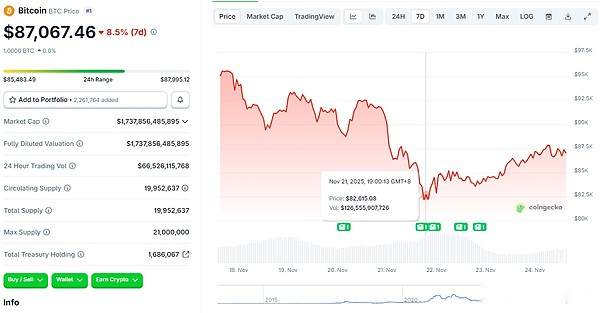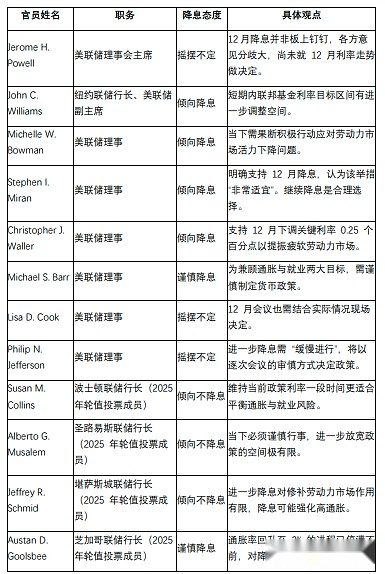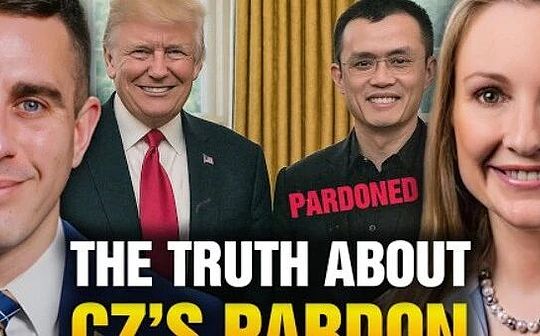
Deng Tong, Bitcoin Vision
On November 21, according to CME’s “Fed Watch”: the probability that the Federal Reserve will cut interest rates by 25 basis points in December is 39.6%, and the probability of keeping interest rates unchanged is 60.4%.On the same day, Williams, Vice Chairman of the Federal Reserve and President of the New York Fed, said that the Federal Reserve can cut interest rates “in the near future” without jeopardizing its inflation target.Affected by these remarks, Polymarket “predicted that the probability of the Federal Reserve cutting interest rates by 25 basis points in December rose to 61%.”Today, according to CME’s “Fed Watch” data, the probability that the Federal Reserve will cut interest rates by 25 basis points in December has risen to 69.4%, and the probability of keeping interest rates unchanged is 30.6%.
And before Williams spoke, the price of BTC had been falling, even touching $82,000.Since the announcement of the interest rate cut, the price of BTC has begun to slowly recover, and as of press time, it was trading at $87,067.46.

White House economic adviser Hassett pointed out: The new leadership of the Federal Reserve may be expected to cut interest rates. Trump may interview Federal Reserve candidates in the next few months. We may determine the candidate for the Federal Reserve Chairman around the New Year.The market is currently paying attention to the Federal Reserve’s FOMC meeting.
1. Voting mechanism for the Federal Reserve FOMC meeting
The Federal Reserve’s Federal Open Market Committee (FOMC) makes decisions by majority vote, with each voting member having an equal vote.The committee has a total of 12 voting members, who are composed of two parts: permanent voting committee and rotating voting committee.
-
All members of the Board of Directors (up to seven people);
-
President of the Federal Reserve Bank of New York;
-
Four of the remaining 11 Reserve Bank governors serve on a rotating basis for one-year terms.
The seven non-voting Reserve Bank presidents attend FOMC meetings and participate in the committee’s discussions.
voting mechanism
-
Decision by majority vote:At the end of each two-day meeting, participants vote on monetary policy proposals (for example, whether to adjust the target range for the federal funds rate), and the proposal that receives a majority of votes is adopted.
-
Consensus:Despite the existence of a voting mechanism, FOMC members typically engage in extensive discussions and consultations to seek consensus to ensure that policy decisions have broad support and thereby convey a consistent message to the market.
-
Objection record:If a voting member disagrees with the final decision, their dissent is formally recorded in the meeting minutes, which demonstrates to the outside world the diversity of views within the committee.
“In practice, committee members communicate closely between meetings and try to reach consensus, but there’s no guarantee that consensus will be reached,” said Jeffrey Roach, chief economist at LPL Financial.
Having all Fed members on the same page helps send the message to markets that Fed officials are on the same page about their actions.A divided vote could raise questions about whether the Fed believes its actions were correct and the motives of Fed officials.
2. 2025 FOMC voting members and preferred views

Permanent Voting Member (Member of the Board of Governors of the Federal Reserve System and President of the Federal Reserve Bank of New York)
-
Jerome H. Powell, Chairman (Board of Governors): Uncertain
On October 29, at a press conference after the Federal Reserve decided to cut interest rates by 25 basis points, Powell stated that the interest rate cuts may not necessarily continue until December as previously widely predicted.”Further interest rate cuts at the December meeting are not a certainty, far from it. Opinions are very different today. So we have not yet made a decision on the direction of interest rates in December.” Powell acknowledged that the Fed is in a difficult situation and that economic trends are pulling monetary policy in the opposite direction.”What we have now is a situation where there are upside risks to inflation and downside risks to employment. We only have one tool… You can’t deal with both at the same time.”
-
John C. Williams, Vice Chairman (New York Fed President): Favoring rate cuts
Williams told a meeting of Chile’s central bank that U.S. interest rates could fall without jeopardizing the Fed’s inflation target while also helping to prevent a decline in the job market.”I think monetary policy is tightening a little bit… so I think there is room for further adjustments in the federal funds rate target range in the short term to bring the policy stance closer to a neutral range.” Williams said the Fed needs to achieve its inflation target “without undue risk to the full employment goal.”
-
Michelle W. Bowman, Fed governor: leaning towards lowering interest rates
Speaking after the Federal Open Market Committee (FOMC) decided in September to cut interest rates for the first time since 2025, Bowman said: “Now is the time for the Committee to act decisively and aggressively to address signs of declining labor market vitality and fragility. We may well be behind the curve in responding to worsening labor market conditions.”
-
Stephen I. Miran, Federal Reserve Board Governor: Tends to lower interest rates
Milan clearly supports an interest rate cut in December and believes it is “very appropriate”.He emphasized on November 15 that the data since September are generally dovish, supporting the Fed’s strengthening of its dovish stance.Earlier, he also proposed that interest rates should be cut by 50 basis points, or at least 25 basis points.He believes that if there are no major changes in economic data, continuing to cut interest rates is a “consistent and reasonable choice.”Milan is the former White House chief economic adviser appointed by Trump, and his independence has been questioned – and his radical stance has exacerbated divisions within the Fed.
-
Christopher J. Waller, Federal Reserve Board Governor: Tends to lower interest rates
On November 17, Waller said he supported another 0.25 percentage point cut in the U.S. key interest rate in December to help boost the weak U.S. labor market – and he doubted he would change his mind.Waller said he was convinced labor market conditions had worsened based on surveys of consumers and businesses and his own contacts with large employers.He pointed out that key employment data, which has been delayed due to the record 43-day government shutdown, is likely to have the opposite result once it is released.”The labor market remains weak and close to stagnation.”At the same time, inflation has not risen significantly in recent months.He said the economic slowdown and high interest rates have curbed consumer spending, helping to control inflation.”Given signs of slowing economic growth and the possibility of modest wage gains due to a weak labor market, I don’t see any factors that will cause inflation to accelerate.”
-
Michael S. Barr, Fed Governor: Cautious about cutting interest rates
On November 20, Michael Barr said: “I am concerned that inflation is still around 3%, and our target is 2%. So we need to be cautious about monetary policy now because we want to make sure that we achieve both aspects of our mission.”
-
Lisa D. Cook, Fed Governor: Uncertain
Cook said in an interview with the Brookings Institution in Washington: “I decide my monetary policy stance at each meeting based on the latest data from a variety of sources, changes in my expectations, and the balance of risks.Including the December meeting, every meeting is an in-person meeting.”
-
Philip N. Jefferson, Fed Governor: Uncertain
On November 17, Jefferson noted that as the Fed eases policy to a point that could halt progress in slowing inflation, it will need to “go slow” on further rate cuts.“In recent months, I think the balance of risks in the economy has shifted, with downside risks to employment increasing compared to upside risks to inflation, which may have declined recently.”Jefferson will be guided by data and adopt a “meeting-by-meeting” approach to deciding policy. “This is an especially prudent approach at this point in time.”It remains unclear how much official data we will see” ahead of the Fed’s December policy meeting.
2025 Rotating Voting Member (Regional Fed President)
-
Susan M. Collins, Boston Fed President: Tends not to cut interest rates
On November 12, Collins said: Due to concerns about high inflation, she believes that the threshold for further easing monetary policy in the near future is “relatively high.”“I would not ease policy easily without clear evidence of labor market deterioration, especially with limited information on inflation due to the government shutdown.In the current highly uncertain environment, it may be appropriate to maintain policy rates at current levels for some time in order to balance inflation and employment risks.”
-
Alberto G. Musalem, President of the St. Louis Fed: Tends not to cut interest rates
On November 10, Mussallem expressed clear skepticism about the prospects of further monetary easing.”It is vital that we proceed with caution at this moment,” he said in an interview with the media.I think there is very limited room for further easing of policy without making it too loose.”Mussallem believes that the current inflation rate is closer to 3% than the Fed’s 2% target. He added that financial conditions, including stock valuations and house prices, are already at a high level; monetary policy is closer to a neutral level than a lightly restrictive state; the labor market has also cooled in an orderly manner. “I think we need to continue to take measures to curb inflation.”
-
Jeffrey R. Schmid, Kansas City Fed President: Tends not to cut interest rates
On November 14, Schmid said that further interest rate cuts may play a greater role in reinforcing high inflation than supporting the labor market: “I don’t think further interest rate cuts will play a big role in repairing the cracks in the labor market – these pressures are more likely to come from the results of technology and immigration policies.”Structural changes. However, a rate cut could have a longer-lasting impact on inflation by raising questions about our commitment to sticking to our 2% inflation target.”That rationale is guiding his thinking about the upcoming December Fed policy meeting, he said, adding that he remains open to new information in the coming weeks.
-
Austan D. Goolsbee, Chicago Fed President: Cautious on cutting interest rates
Goolsby told a CFA Society event in Indianapolis that the return to 2% inflation “seems to have stalled.””It makes me a little uneasy.”
In summary, four of the 12 voters clearly favor a rate cut, while the other eight are undecided or not.
3. Outside expectations for the Federal Reserve to cut interest rates in December
-
Barclays Research pointed out that there is still uncertainty about the Federal Reserve’s interest rate decision next month, but Chairman Powell is likely to push the FOMC to make a decision to cut interest rates.Based on recent speeches, Barclays believes that Governors Milan, Bowman and Waller may support a rate cut, while regional Fed Presidents Musallem and Schmid are inclined to keep interest rates unchanged.The latest statements from Trustees Barr and Jefferson, as well as Goolsby and Collins, show that their attitude has not been clear yet, but they prefer to maintain the status quo.Governors Cook and Williams relied on data but seemed more supportive of a rate cut.”This means that before considering Powell’s position, there may be six voters who prefer keeping rates unchanged and five who prefer a cut,” Barclays said, adding that Powell would ultimately dominate the decision because of the high threshold for governors to publicly oppose his position.
-
CITIC Securities Research reported that New York Fed President Williams hinted at further interest rate cuts in December, which reversed market interest rate cut expectations. The market currently believes that the Fed has a 70% probability of cutting interest rates in December.The Federal Reserve will enter a silent period starting on November 29. Before the silent period, Powell has no schedule to speak publicly or accept media interviews. The speech of his “close ally” Williams may be the last Fed official to speak to affect market expectations.Continuing the previous view, it is expected that there may be a “close call” interest rate cut in December, with a rate of 25bps.For the market, the expected reversal of interest rate cuts, the advancement of the “28-point” plan and the news that the Trump administration is considering exporting H200 chips to China, mean that macro factors will no longer be a source of market pressure in the short term, and the market may focus more on issues such as AI companies’ bond issuance and cryptocurrency trends.
-
Polymarket predicts that the probability of the Federal Reserve cutting interest rates by 25 basis points in December has risen to 67%.








